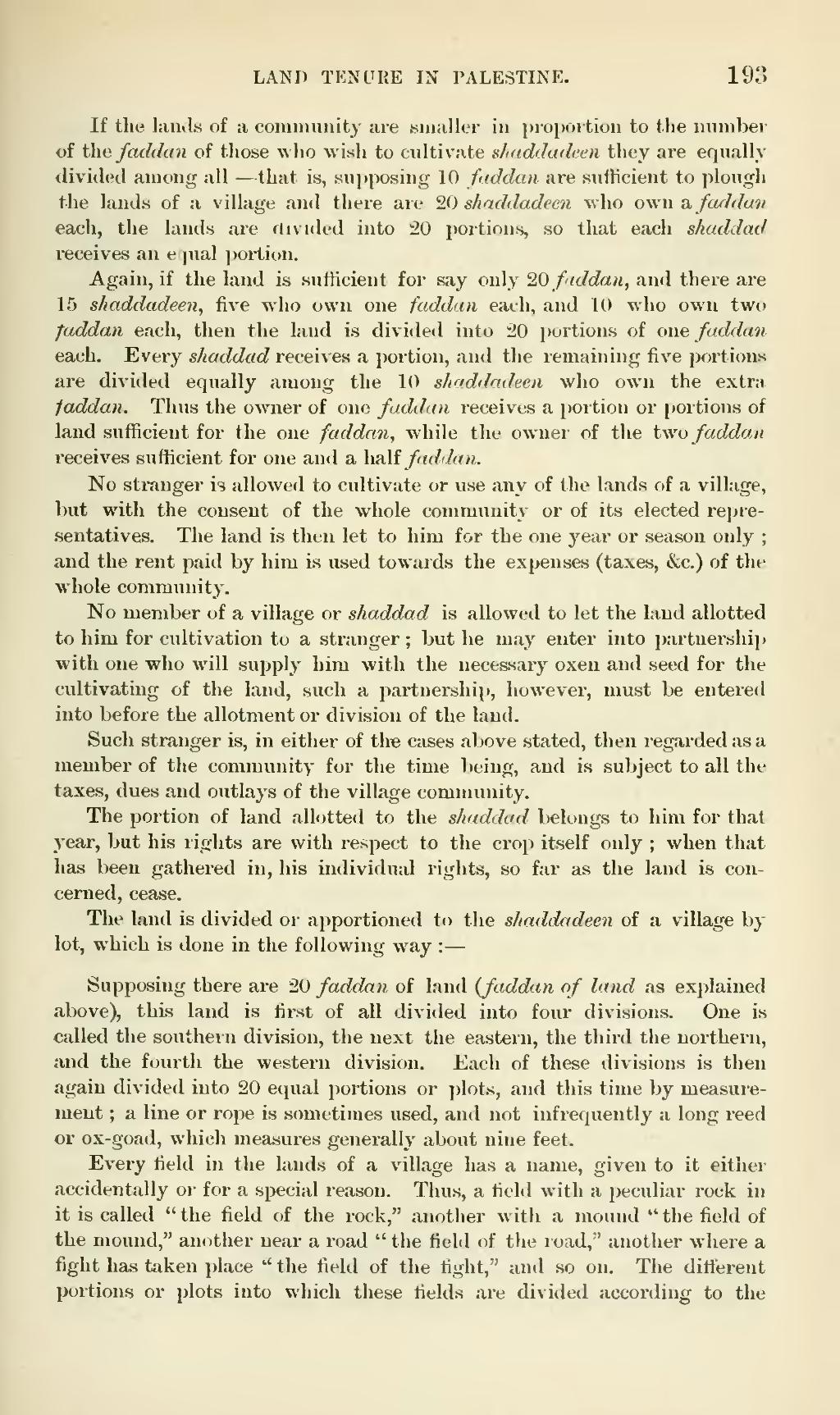If the lands of a community are smaller in proportion to the number of the faddan of those who wish to cultivate shaddadeen they are equally divided among all—that is, supposing 10 faddan are sufficient to plough the lands of a village and there are 20 shaddadeen who own a faddan each, the lands are divided into 20 portions, so that each shaddad receives an equal portion.
Again, if the land is sufficient for say only 20 faddan, and there are 15 shaddadeen, five who own one faddan each, and 10 who own two faddan each, then the land is divided into 20 portions of one faddan each. Every shaddad receives a portion, and the remaining five portions are divided equally among the 10 shaddadeen who own the extra faddan. Thus the owner of one faddan receives a portion or portions of land sufficient for the one faddan, while the owner of the two faddan receives sufficient for one and a half faddan.
No stranger is allowed to cultivate or use any of the lands of a village, but with the consent of the whole community or of its elected representatives. The land is then let to him for the one year or season only; and the rent paid by him is used towards the expenses (taxes, &c.) of the whole community.
No member of a village or shaddad is allowed to let the land allotted to him for cultivation to a stranger; but he may enter into partnership with one who will supply him with the necessary oxen and seed for the cultivating of the land, such a partnership, however, must be entered into before the allotment or division of the land.
Such stranger is, in either of the cases above stated, then regarded as a member of the community for the time being, and is subject to all the taxes, dues and outlays of the village community.
The portion of land allotted to the shaddad belongs to him for that year, but his rights are with respect to the crop itself only; when that has been gathered in, his individual rights, so far as the land is concerned, cease.
The land is divided or apportioned to the shaddadeen of a village by lot, which is done in the following way:—
Supposing there are 20 faddan of land (faddan of land as explained above), this land is first of all divided into four divisions. One is called the southern division, the next the eastern, the third the northern, and the fourth the western division. Each of these divisions is then again divided into 20 equal portions or plots, and this time by measurement; a line or rope is sometimes used, and not infrequently a long reed or ox-goad, which measures generally about nine feet.
Every field in the lands of a village has a name, given to it either accidentally or for a special reason. Thus, a field with a peculiar rock in it is called "the field of the rock," another with a mound "the field of the mound," another near a road "the field of the road," another where a fight has taken place "the field of the fight," and so on. The different portions or plots into which these fields are divided according to the
